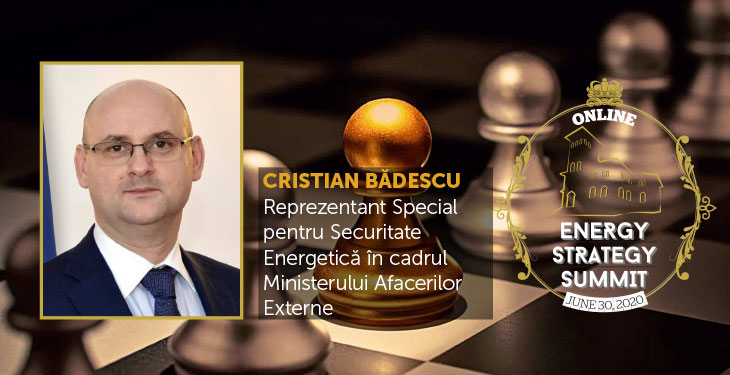he zero emission target for the European Union in 2050 can only be achieved through a set of combined measures in the field of energy efficiency, new renewable energy production and new technologies that will allow us, at least for a transitional period, to use fossil fuels, said at the Energy Strategy Summit 2020, Cristian Bădescu, Special Representative for Energy Security in the Ministry of Foreign Affairs.
“I would like to highlight the extremely important discussion that will start this autumn on the target that the European Union will assume for 2030, as an intermediate step towards the 0% for 2050. In this context, Romania will also have to engage in this extremely intense effort that is taking place at the level of the European Union, and the energy industry has an essential role in finding solutions to achieve the objectives”, said Bădescu.
In the context of increasing energy demand and digitalization, the transition we are going through will mean increasing generation capacity and thus increasing energy security.
“There are two new elements in this context: on the one hand there were extremely spectacular and special variations in fossil fuel prices, and on the other hand, this pandemic imposed a reorientation of activities and, at some point, even questioned the European Union’s commitments on energy and climate change. Fortunately, the reaction of the European institutions has been very quick to formulate commitments of support for the affected companies and, moreover, there has been a context that has allowed steps to be taken to strengthen the European path on several levels,” he added.
Romania has placed itself in an extended group of member states that requested that the European recovery process focused on the implementation of the Green Deal, the European Ecological Pact. At the same time, Romania requested the continuation of the support that must be received by the sector of natural gas, as a transition fuel, by diversifying the supply and capitalizing on domestic resources.
“Romania sends some important messages. On the one hand it sends the message of the importance of continuing to pursue the objective of ensuring energy security, through diversification and capitalization of indigenous resources. We must note that the region of Dobrogea and the Black Sea have the potential to become a very important hub of energy production. There is also the component of nuclear energy; the development of the Cernavodă project remains a strategic objective, included in the Energy Strategy and in the National Energy-Climate Plan. From a political point of view, the activity is very intense for redefining the project, in collaboration with our strategic partners. On the other hand, if we are talking about the Black Sea, we are talking about offshore [O&G] and it is very important that discussions continue for the definition and adoption of a transparent and competitive regulatory framework as soon as possible. Last but not least, I would like to point out that, from an energy point of view, the Black Sea also means for Romania its potential for offshore wind. Lately, Romania has taken energetic steps for the Black Sea to be included in the strategy that the European Commission will present this autumn, by capitalizing on its offshore wind potential”, added Bădescu.
“The second message is that it is essential that this climate commitment does not translate into pronounced negative effects for the economy and for the people. There is the Modernization Fund, which will become active at the beginning of next year, and which for Romania represents a chance to carry out the assumed energy transition without negative effects. Secondly, there is the Fair Transition Fund, which is defined to support the affected regions, and in Romania the region of coal-fired power plants is the most affected. Around these regions will be defined the plans to support the local authorities, the citizens and the industries from the respective areas”.
The third message Romania sends is related to the capitalization of new technologies. “We need these new technologies, which are crucial to achieving our goals. From this point of view, at national level, a stronger partnership between authorities and companies in terms of research and innovation development is essential. The latest such partnership is related to hydrogen, which is one of the key commitments for the future,” he said.

